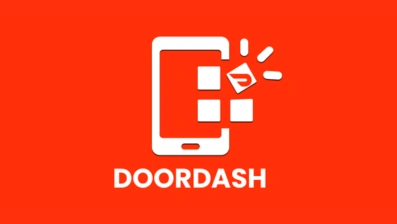The cryptocurrency industry continues to thrive, and 2025 offers a unique opportunity for businesses to enter this lucrative market by developing a crypto exchange platform.
However, one pressing question often arises: how much does it cost to build a crypto exchange platform?
The answer depends on the platform's complexity, features, and security measures.
On average, the development cost ranges from $100,000 to $500,000. For high-end platforms with advanced functionalities, the cost can exceed $1 million.
Curious about what drives these costs and how to approach development efficiently?
Let’s explore the key reasons to build a platform, cost breakdowns, and ways to optimize your investment.
Reasons to Build a Crypto Exchange Platform in 2025
Why is 2025 a strategic year to venture into the crypto exchange market? Here are three solid reasons why now is the time to act:
1. Increasing Crypto Adoption
The adoption of cryptocurrencies is skyrocketing, with millions of new users joining the market every year.
This growing user base creates a demand for reliable and feature-rich crypto exchange platforms.
By entering the market now, you can position yourself to serve this expanding audience.
2. Diverse Revenue Streams
Crypto exchanges offer multiple monetization opportunities.
Transaction fees, subscription models, staking, and premium services provide steady revenue.
With the right features and pricing model, your platform can generate substantial profits.
3. Advanced and Cost-Effective Technology
In 2025, blockchain technology is more mature and accessible than ever.
Tools, frameworks, and pre-built solutions have made the development process faster and more cost-efficient, reducing entry barriers for businesses looking to launch their platforms.
These reasons make 2025 the perfect time to turn your crypto exchange vision into reality.
Average Cost to Develop a Crypto Exchange Platform in 2025
The cost of developing a crypto exchange platform in 2025 can range from $100,000 to $500,000, depending on the scope and complexity of the project.
Here’s a quick breakdown of typical cost ranges based on platform types:
Platform Type | Cost Range | Key Features | Ideal For |
Basic Platform | $100,000 - $200,000 | User registration, wallet integration, basic trading engine, standard security. | Startups or small businesses testing the market. |
Mid-Tier Platform | $200,000 - $350,000 | Multi-currency support, advanced analytics, mobile compatibility, better security. | Growing businesses targeting a larger audience. |
Advanced Platform | $400,000 - $500,000+ | High-frequency trading, staking, DeFi integration, robust security, scalability. | Enterprises looking for global market reach. |
The actual cost depends on multiple factors, including the technology stack, feature set, and team expertise.
Keep reading to uncover these factors in detail.
Factors That Affect the Cost to Build a Crypto Exchange Platform
To accurately estimate the cost to build a crypto exchange platform, it’s crucial to examine the factors that influence pricing.
Every choice you make in features, design, technology, and compliance directly impacts the crypto platform development cost.
Here’s a detailed look at each factor:
► Platform Type
The type of platform you choose—centralized or decentralized—affects the overall cost to create a crypto exchange platform.
- Centralized Platforms: These platforms rely on internal systems and a single server to process transactions. They are simpler to build and cost between $100,000 and $200,000, making them a good choice for startups.
- Decentralized Platforms: Built on blockchain technology, decentralized exchanges require advanced smart contracts and complex architectures. This increases the cost to make a crypto exchange platform to $250,000 or more. Decentralized exchanges also demand high-end security protocols, further adding to the expenses.
► Core Features and Functionalities
The features you select determine a significant part of the crypto exchange platform development cost.
- Basic Features: Essential functionalities like user accounts, wallet integration, and trading engines form the foundation of the platform. These cost approximately $50,000 to $100,000.
- Advanced Features: To stay competitive, platforms often include margin trading, staking, real-time analytics, and multi-currency support. These features add $100,000 to $200,000 to the total cost.
► Security Measures
The importance of security in crypto exchange platforms cannot be overstated. Inadequate security can lead to hacks, resulting in loss of user funds and credibility.
- Basic Security Measures: Features like two-factor authentication (2FA), SSL certificates, and encrypted communications cost around $20,000 to $50,000.
- Advanced Security Measures: For top-tier protection, platforms include DDoS protection, anti-money laundering (AML) protocols, and multi-signature wallets. These cost an additional $50,000 to $100,000.
► Regulatory Compliance
Complying with local and international regulations can be one of the most significant cost factors.
- Crypto-Friendly Regions: Licensing in countries like Malta or Estonia costs between $10,000 and $50,000.
- High-Regulation Regions: In countries like the USA or UK, where compliance involves detailed processes and legal approvals, costs can soar to $150,000 or more, including legal consultations and AML/KYC implementations.
► Technology Stack
Your technology stack dictates not only the cost to build a crypto exchange platform but also its scalability and performance.
- Basic Tech Stack: Standard frameworks like Node.js or Python with basic blockchain integration cost between $50,000 and $75,000.
- Advanced Tech Stack: Platforms using high-performance frameworks, custom blockchain nodes, and smart contract development cost $100,000 to $150,000.
► UI/UX Design Complexity
User experience is critical in driving user engagement and trust.
- Basic UI/UX Design: Simple layouts and essential screens cost $10,000 to $20,000.
- Advanced UI/UX Design: Interactive elements, animations, and seamless flows can cost $30,000 to $50,000 or more, but they create a premium user experience.
► Developer Expertise
The expertise of the development team directly impacts the crypto exchange platform development cost.
- Offshore Developers: Teams from regions like Eastern Europe or Asia charge $50-$80 per hour, costing between $75,000 and $150,000 for the full project.
- Onshore Developers: Developers from the USA or Western Europe charge $150-$200 per hour, increasing costs to $150,000 or more.
► Third-Party Integrations
Adding APIs for payment processing, liquidity providers, or market data increases costs.
- Basic Integrations: Payment gateway APIs cost around $10,000 to $30,000.
- Advanced Integrations: Adding liquidity provider APIs or advanced trading tools costs $30,000 to $50,000+.
► Testing and Quality Assurance (QA)
Rigorous testing ensures a bug-free and secure platform.
- Basic QA Testing: Functional and usability testing costs $10,000 to $25,000.
- Advanced QA Testing: Includes load, performance, and penetration tests, costing $25,000 to $50,000.
► Post-Launch Maintenance
Maintenance costs are ongoing and essential to ensure smooth operations.
- Basic Maintenance: Minor updates and support cost $5,000 to $7,500 per month, translating to $60,000 to $90,000 annually.
- Advanced Maintenance: Includes major feature additions and optimizations, costing $7,500 to $10,000+ per month, or $90,000 to $120,000 annually.
Understanding these factors and their detailed cost implications helps you prepare a realistic budget for your project.
Other (Hidden) Development Costs
When calculating the cost to create a crypto exchange platform, it’s easy to overlook some hidden expenses that can impact your budget.
These costs often arise during or after development, so it’s important to account for them upfront.
1] Infrastructure Costs
Setting up servers, cloud hosting, and blockchain nodes incurs additional costs.
Basic infrastructure for smaller exchanges costs $5,000 to $15,000 per month, while high-performance setups for large platforms can go up to $50,000 per month.
Infrastructure Type | Monthly Cost | Remarks |
Basic Setup | $5,000 - $15,000 | For smaller exchanges with limited users. |
Advanced Setup | $30,000 - $50,000+ | High traffic and scalability-focused. |
2] Marketing and Branding
After development, attracting users to your platform is crucial.
Marketing campaigns, SEO, social media ads, and influencer partnerships typically cost $20,000 to $50,000 per campaign, depending on the scale and target audience.
Marketing Activity | Cost Range | Remarks |
SEO and Content Marketing | $5,000 - $15,000/month | Increases platform visibility online. |
Paid Advertising | $10,000 - $30,000/campaign | Social media ads and PPC campaigns. |
3] Legal and Consulting Fees
Beyond regulatory compliance, you may need ongoing legal support to navigate cryptocurrency laws and policies.
Legal consulting fees typically range from $10,000 to $30,000 annually but can increase for platforms operating in high-regulation regions.
Legal Support Type | Annual Cost | Remarks |
Basic Legal Support | $10,000 - $20,000 | Contract drafting and basic advice. |
Advanced Legal Consulting | $20,000 - $50,000+ | Covers multi-region compliance. |
4] Operational Costs
Running a crypto exchange involves recurring costs such as employee salaries, software licensing, and transaction processing fees.
Operational costs typically range from $20,000 to $100,000+ monthly, depending on platform size and user activity.
Operational Area | Monthly Cost | Remarks |
Employee Salaries | $10,000 - $30,000 | Includes developers, support staff, etc. |
Transaction Fees | $5,000 - $10,000+ | Depends on the number of transactions. |
5] Unexpected Downtime and Support
Technical issues or server downtime can lead to user dissatisfaction and revenue loss.
Having a reliable support team and contingency plan is essential, costing $5,000 to $15,000 per incident, depending on the complexity of the issue.
Downtime Type | Cost Impact | Remarks |
Minor Downtime | $5,000 - $10,000 | Temporary server issues. |
Major Downtime | $10,000 - $15,000+ | Significant platform outages. |
By factoring in these hidden costs alongside the crypto exchange platform development cost, you can better plan your budget and avoid unexpected financial surprises.
Here’s How to Reduce Crypto Exchange Development Costs
Building a crypto exchange platform can be expensive, but strategic planning can help minimize costs while maintaining quality.
Here are some effective ways to reduce the crypto exchange platform development cost:
1. Start with an MVP
Developing a Minimum Viable Product (MVP) with core features helps test the market while minimizing upfront investment.
An MVP typically costs $100,000 to $200,000, depending on the features included. You can add advanced functionalities later based on user feedback.
Development Stage | Cost Range | Remarks |
MVP Development | $100,000 - $200,000 | Core features only, quicker to market. |
Full Platform Development | $200,000 - $500,000+ | All features, longer timelines. |
2. Outsource Development
Hiring an offshore development team can significantly lower costs while providing access to skilled developers.
Offshore teams charge $50-$80/hour, compared to onshore rates of $150-$200/hour.
Ensure you choose a reputable firm to maintain quality.
Developer Location | Hourly Rate | Remarks |
Offshore Developers | $50 - $80/hour | Cost-effective, skilled professionals. |
Onshore Developers | $150 - $200/hour | Higher cost, local expertise. |
3. Use Open-Source Tools
Utilizing open-source blockchain platforms like Ethereum, Binance Smart Chain, or Hyperledger reduces development costs.
These platforms provide ready-to-use frameworks, cutting costs on building foundational blockchain features.
Blockchain Option | Cost Saving | Remarks |
Open-Source Platforms | $20,000 - $50,000 | Eliminates foundational development work. |
4. Focus on Essential Features First
Avoid adding too many advanced features during the initial development phase.
Start with essential functionalities such as user accounts, wallet integration, and a trading engine.
This approach reduces upfront costs by 30%-40%.
Feature Focus | Cost Reduction | Remarks |
Core Features Only | 30% - 40% savings | Advanced features can be added later. |
5. Partner with a Specialized Development Company
Working with an experienced development company that specializes in crypto platforms ensures efficient resource utilization and minimizes errors.
Firms like Dotstark offer cost-effective packages tailored to your requirements.
Development Partner | Cost Benefit | Remarks |
Specialized Company | Up to 20% savings | Streamlined processes and expertise. |
6. Leverage Cloud Hosting
Instead of setting up expensive on-premises infrastructure, choose scalable cloud hosting solutions. Services like AWS or Azure offer pay-as-you-go models, reducing upfront infrastructure costs by 30%-50%.
Hosting Type | Cost Saving | Remarks |
Cloud Hosting | 30% - 50% savings | Scalable and cost-efficient. |
7. Plan for Scalability Early
Designing your platform for scalability avoids costly redesigns in the future. Scalable architectures might have higher initial costs but save significantly in the long run.
Scalability Planning | Long-Term Savings | Remarks |
Scalable Architecture | Saves 20% - 30% later | Prevents expensive reworks. |
By implementing these strategies, you can effectively lower your crypto platform development cost without sacrificing quality or user experience.
Dotstark – Your Partner in Crypto Exchange Development
Building a robust and cost-effective crypto exchange platform requires the right partner, and that’s where Dotstark stands out.
As a leading crypto platform development company, we specialize in creating secure, scalable, and feature-rich crypto exchange platforms tailored to your business needs.
Our expertise spans across blockchain technology, regulatory compliance, and user-centric designs, ensuring your platform is not only functional but also competitive in the ever-evolving cryptocurrency market.
Whether you need a custom solution or want to explore white-label options, Dotstark provides end-to-end services, including:
- Custom Development: Tailored to your specific requirements.
- Cost Optimization: Strategic planning to reduce development expenses.
- Post-Launch Support: Continuous updates and maintenance.
With a focus on delivering excellence, we help businesses turn their crypto exchange ideas into reality. Ready to get started? Let’s build your platform together!
Conclusion
Developing a crypto exchange platform is a strategic investment that offers immense potential in 2025. While costs can range from $100,000 to $500,000 or more, understanding the influencing factors, hidden costs, and cost-reduction strategies can help you plan effectively.
Dotstark is here to simplify the process and provide you with a seamless experience. Whether you’re a startup testing the waters or an established business looking to expand, our team has the expertise to bring your vision to life.
Frequently Asked Questions
The cost varies between $100,000 and $500,000, depending on features, security measures, and platform type. Advanced functionalities can increase costs further.
Starting with a white-label solution or MVP is the most cost-effective approach. These options provide essential features at a fraction of the cost of custom development.
Key factors include platform type, core features, security measures, regulatory compliance, technology stack, and developer expertise.
Development timelines typically range from 6 to 12 months, depending on complexity and customization.
Yes! Dotstark offers strategic planning, pre-built solutions, and expert development to minimize costs without compromising quality.





.webp)







 +91 9680599916
+91 9680599916
 vanshika@dotstark.com
vanshika@dotstark.com
